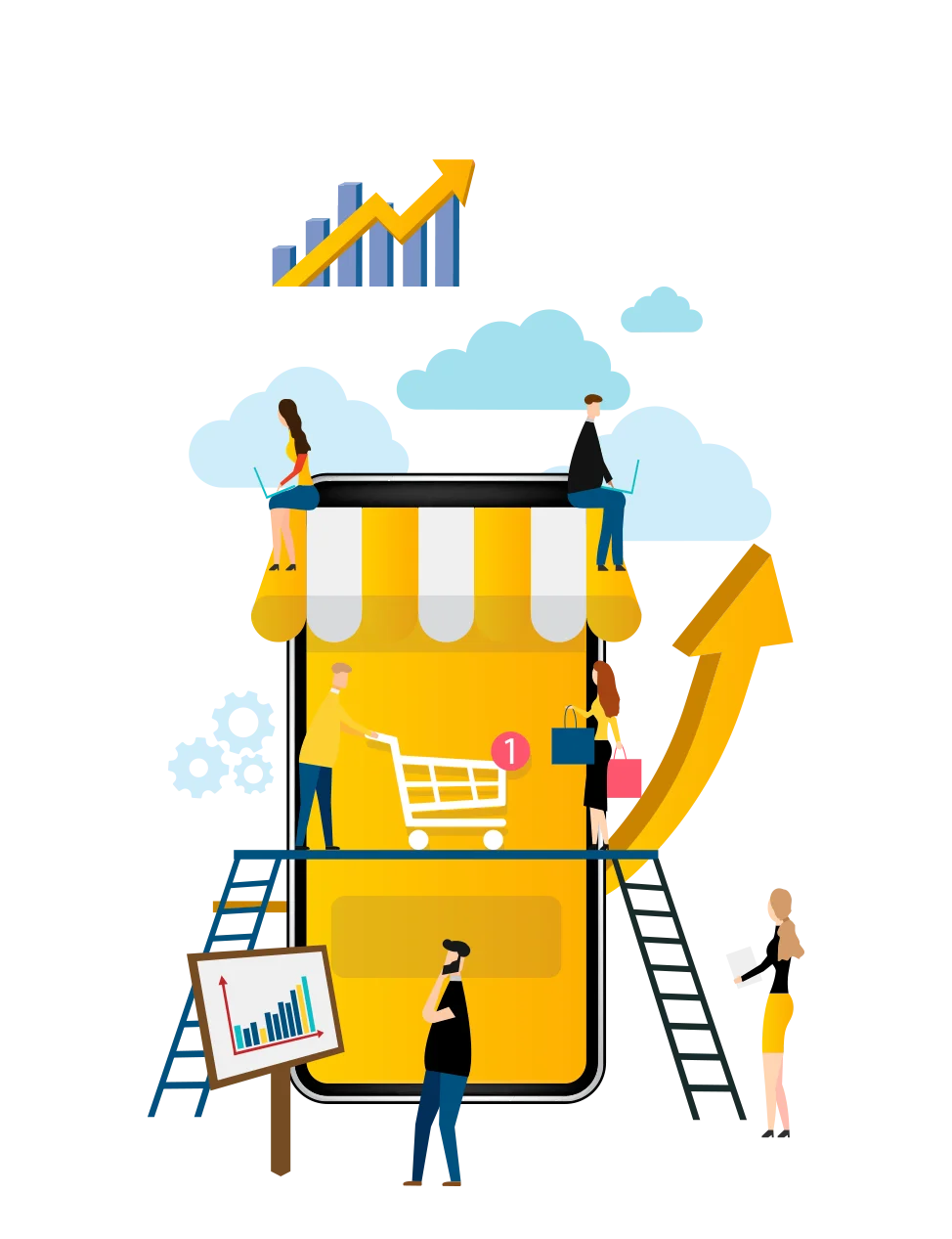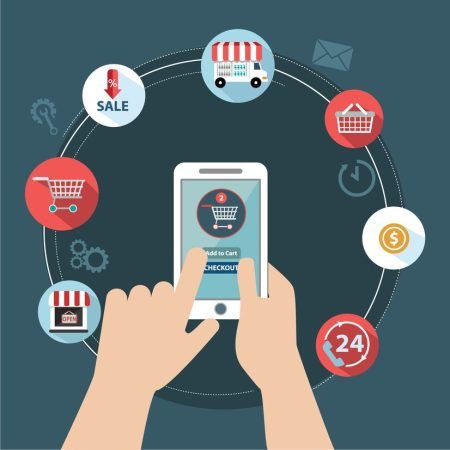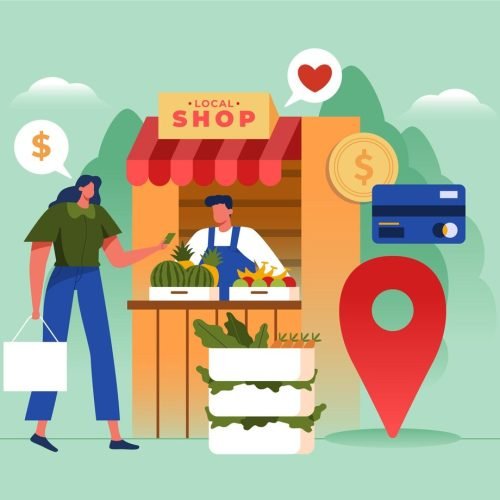Understanding E-Commerce
The Evolution of
E-Commerce
E-commerce isn’t new; it dates back to the 1960s with the Electronic Data Interchange. However, it soared in popularity in the mid-90s with the first online sale, signalling a new era in commerce. Today, giants like Amazon and Alibaba dominate the scene, offering everything under the sun.
Advantages and
Challenges
Additionally, security concerns regarding online transactions and the need for robust customer support are common challenges in the e-commerce landscape. Despite these hurdles, the growing trend emphasizes its significant impact on modern business practices and consumer lifestyles.
Advantages of Ecommerce
Ecommerce has revolutionised business operations and consumer purchasing behaviours, offering several significant advantages:

Ease of Use
Ecommerce provides unparalleled convenience for consumers and businesses alike, allowing for shopping from anywhere at any time, and enabling businesses to operate round-the-clock without physical store limitations.

Global Reach
It eliminates geographical barriers, enabling businesses to access a worldwide customer base beyond physical store limitations, thereby opening up new customer segments and revenue opportunities.

Cost Efficiency
Operating online significantly reduces the overhead costs associated with physical stores, such as rent and utility bills, allowing for more efficient marketing and advertising strategies.

Scalability
Ecommerce platforms offer businesses the flexibility to quickly adapt to market changes, expand product lines, and meet growing demand without the constraints of physical retail spaces.

Data-Driven Decision Making
The vast amount of data generated by e-commerce activities allows businesses to gain insights into customer preferences and market trends, enabling tailored marketing strategies and product offerings.
Challenges Facing Ecommerce
Cybersecurity Risks
Handling sensitive customer information online exposes businesses to cyber threats, necessitating strong cybersecurity measures to protect data.
Logistics and Delivery
Managing inventory and ensuring prompt deliveries are crucial for customer satisfaction, posing logistical challenges, especially for high-volume transactions.
Customer Service Excellence
Providing a seamless online shopping experience is vital to building customer trust and loyalty, requiring efficient customer service and user-friendly website design.
Regulatory Adherence
Ecommerce operations must navigate complex regulations related to data protection, consumer rights, and taxation, which can vary across different regions.
High Competition
The online marketplace is fiercely competitive, demanding effective branding, marketing, and differentiation strategies to stand out.
Delving Deeper: Types and Models of E-Commerce
B2B (Business-to-Business)
Transactions between businesses.
B2C (Business-to-Consumer)
Direct sales to consumers, like online retail stores.
C2C (Consumer-to-Consumer)
Platforms where individuals can sell to each other, like eBay.
C2B (Consumer-to-Business)
Individuals offering services to businesses, common in freelancing platforms.
Dropshipping
Selling products without handling them.
Wholesaling
Selling large quantities, often to retailers.
Private Labelling
Custom-made products under your brand.
Subscription Services
Regular delivery of products or services for a recurring fee.
Unlock Your Digital Storefront: Embrace
E-Commerce, Transform Your Business!
Starting an e-commerce business requires research, planning, and a focus on digital presence. Here’s how to begin:
Research
Understand the market and your niche.
Business Structure
Decide on your legal and business model.

Website Development
Create an engaging online store.
Marketing
Use digital channels to promote your business.
Your e-commerce website is more than just an online store; it’s a virtual representation of your brand. It should offer an easy and secure shopping experience, reflecting the essence of your products or services.
While e-commerce is about online transactions, e-business encompasses all aspects of running an online business, including operations, marketing, and more.
The Growth of E-Commerce

The E-Commerce Ecosystem
Online Marketplaces
Online marketplaces like Amazon, eBay, and Alibaba serve as digital platforms where sellers and buyers converge. These marketplaces offer a wide array of products, from electronics to fashion, and provide a convenient one-stop shopping experience.
E-commerce Websites
Individual businesses, both large and small, operate e-commerce websites to showcase their products and reach a global audience. These websites are carefully designed to provide a seamless and secure shopping experience for customers.
Payment Gateways
Payment gateways are essential for processing online transactions securely. They enable customers to make payments using various methods, including credit cards, digital wallets, and cryptocurrencies.
Supply Chain and Logistics
Efficient supply chain management and logistics are critical to the success of e-commerce. Timely delivery of products to customers, often through third-party logistics providers, ensures a positive shopping experience.
The Impact of E-Commerce
Convenience and Accessibility
Cost-Effective Business Models
Personalization and Data Insights
Challenges and Solutions
The Impact of E-Commerce
Convenience and Accessibility
Cost-Effective Business Models
Personalization and Data Insights
Challenges and Solutions
Emerging Trends in E-Commerce

Mobile Commerce (M-Commerce)

Voice Commerce

Sustainability and Ethical Shopping
Success Stories
Learning from the Best
Amazon
A behemoth that started as an online bookstore and expanded to sell everything imaginable.
Dollar Shave Club
Revolutionised grooming and personal care through a subscription model.
FAQ
Most frequent questions and answers
A: Begin with market research, choose a business structure, design your website, and plan your marketing strategy.
A: It’s a website that enables online transactions for goods and services.
A: E-commerce is about online transactions, while e-business covers all online business activities.